Sponsored
Techradar |
- 10 useful things to do with an old laptop
- Happy Christmas to all, from us at TechRadar
- Review: Zomm
- 22 ways to convert your friend to Linux
- Exclusive: Sony Ericsson PSP Phone to be joined by Hallon and Anzu
- Updated: Google Nexus S: 16 tips and tricks
- Updated: Google Nexus S: 16 tips and tricks
- Review: ViewSonic ViewPad 7
- Review: Vogel's TwistDock
- Opinion: My dad is more tech than me
- In Depth: TechRadar's best kit of 2010
- Sony Ericsson likely to demo PSP phone in January
- Sports and music is the key to popularity on Facebook
- Review: Qnap TurboNAS TS-295 Pro
- Google and NORAD to track Santa again
- Review: Sumvision Cyclone MKV2 HD
- Skype still struggling with outage
- Buying Guide: 20 best mobile phones in the world today
- Virgin Media announces new 3D content
- Steve Jobs named Financial Times person of the year
- Updated: Best Android phone - which should you buy?
- Gary Marshall: More expensive access: can ISPs make it stick?
- Gary Marshall: More expensive access: can ISPs make it stick?
- Tesco offers free international calls over Christmas
- Online profile site About.me gets snapped up by AOL
| 10 useful things to do with an old laptop Posted: 25 Dec 2010 12:00 AM PST  Before you throw out that old laptop, stop and think of all the things it could be doing for you. You could turn it into anything from an electronic recipe book to a cutprice digital picture frame with just a little know-how, some free software and perhaps a little time spent with a screwdriver. Heck, even if the thing doesn't boot up it could earn you a few pounds by being broken up to sell off the remaining working parts. 1. Show off your photos Digital picture frames make great interactive ornaments, although their price is beyond many pockets. If you're willing to spend an afternoon ripping the guts out of an old laptop, though, it's entirely possible to build your own at a fraction of the cost. First you'll need to do a little remodelling. Laptop screens usually don't bend backwards beyond the horizontal, so the general technique involves carefully detaching the screen and repositioning the laptop's body so that it sits behind. This isn't too complicated because most screens are simply connected to the motherboard via a ribbon cable plugged into a socket. PC Format published a practical guide to converting an old laptop into a professional, wall-mounted digital picture frame last year. You can also find guides showing how to convert specific makes and models at Repair4Laptop.org. 2. Donate old hardware
FreeCycle is a grassroots movement for passing on unwanted items to those that have a need for them. The aim is to try to keep useful things out of landfill sites and to give these 'pre-loved' items a new home. There are nearly 500 FreeCycle groups spread across the UK, with a total of over 1.7 million members – see www.uk.freecycle.org. To pass your old machine on to a new owner using FreeCycle, go to the website and search for a local group. Each one uses a Yahoo Group to organise exchanges, and some carry many hundreds of messages per month. With this amount of traffic, you're sure to find someone who needs your old stuff more than you do. Make sure you format the hard disk before passing it on, of course – while keeping old tech alive is a noble pursuit, there's no point potentially giving away your personal information. 3. Donate CPU cycles Due to a severe lack of funding, many research efforts survive by volunteers downloading client software which then runs whenever their computer isn't being actively used. This is possible thanks to the Berkeley Open Infrastructure for Network Computing (BOINC for short). This grew from the original SETI@home project, which listened to the skies for alien transmissions. BOINC allows the developers of similar projects to organise the distribution of work packets for each computer. The idea is that once installed, the client software downloads a packet of data and crunches the numbers. Once complete, it uploads this and downloads another. Some distributed computing projects simply couldn't be undertaken in any other way, and a number are truly awesome in their scope. If you're interested, there are plenty of the distributed projects you can choose from, including helping CERN with the hunt for new particles and identifying molecules that may provide greener energy. Wikipedia maintains a long list of projects you might like to get involved in – see here for more info. 4. Create a recipe book If you're not too bothered about the possibility of getting flour into the keyboard, why not turn your old laptop into an electronic cookbook? There are plenty of free recipe database packages available. ChickenPing is just one example, although it's more than just a recipe database. It also allows you to plan meals and shopping lists, manage the contents of your fridge and generate shopping lists. Once the contents of your fridge are known to ChickenPing, you can even have it generate recipes based on what you have. There's nutritional data, a central database so you can share recipes with others, a very handy substitute finder for ingredients you currently lack, and a 'sticky fingers' mode that gives you a hand summary of the ingredients and cooking method. 5. Serve up files Creating a large network share is a pretty easy way to get your extra machine working for its keep. A domestic fileserver that gives everyone using the network a single place to dump files where they can be efficiently backed up is a very useful thing. After carefully clearing out all your old files and emptying the Recycle Bin, you'll need to set up one or more network shares. Assuming your old laptop runs Windows XP, create a folder into which people can dump their files and right-click on it. Select 'Sharing and Security' from the context menu and a window pops up. Tick 'Share this folder on the network', enter a name and also tick 'Allow network users to change my files'. On the General tab, make sure that 'Read Only' is deselected and click 'OK'. When you browse the network on your other computer, you should see the new share. 6. Make an alarm clock
If you've decided to use your old laptop as a fileserver, it'll be on all day and night, so why not use it as an alarm clock too? To do so, try the Banshee Screamer by Hanov Solutions. Download the installation package, run it and accept the defaults. Clicking the tiny bomb symbol at the top left accesses the menu. You can make the interface larger and set the time from an internet-based time server. You can browse an online skin gallery to change the clock's on-screen appearance, but it's best to keep the default skin and set the desktop background to black. If you also set a blank screensaver, you can prevent the bedroom being too light at night. 7. Explore home automation If your old laptop is in good working order, it could be a great opportunity for you to dabble in the world of home automation. The most well-known home automation system is X-10, which uses your home's mains supply to transmit signals to units plugged into standard sockets. Best of all, it doesn't require a huge amount of computing power to control a whole house, making it ideal for use with an old, underpowered laptop. Link all the relevant switches from a master unit connected to a USB port and supplied software enables you to schedule events, such as closing the curtains and switching on lights. You can even hook the whole thing up to the internet – ideal for times when you'll be unexpectedly late home or away on holiday and want to ward off potential burglars by giving the impression that you're in. For more information on how to do this, check out these sites: www.domialifestyle.com and www.letsautomate.com. 8. Build a media ripper
With a little thought, you can make your old laptop into a CD ripping station to store your music collection. Using EAC (Exact Audio Copy), it's as easy as popping the CD in the drive. First of all, download LAME from here. This codec enables EAC to read the raw WAV files found on audio CDs. Next, download and install EAC from here. When installing, deselect the option to install the Ask toolbar. Once installed, EAC runs and a wizard appears. You can accept the defaults. The wizard will then attempt to locate LAME, which can take a while. Accept the rest of the defaults but enter an email address to access the online database of album information. The main interface appears. Click 'EAC | EAC Options' and select the Directories tab. Select a directory to rip to and click 'OK'. If this is a network share, you can access it from other machines on your network. Put a CD in the drive and accept the option of calibrating. Now click 'Action | Test and Copy Selected Tracks | Compressed' and the rip begins. As for playback, the app you choose is up to you. Windows Media Player is decent, while Winamp is still knocking around too. 9. Make a wireless bridge Almost all laptops have both a wired and wireless network card, making an old one ideal to act as a bridge between a wired hub and your wireless network. Windows XP has the ability to act as a bridge built in. In the Control Panel, click 'Network and Internet Connections | Network Connections'. The general procedure is to click the connection for the wireless card, hold [Ctrl] and click the wired connection. Right-clicking offers the option to bridge the two cards. Microsoft has provided a full network bridging guide, including a troubleshooting section, here. 10. Explore Linux
Linux is the ultimate in laptop resurrection tools. With lower system resource overheads than Windows and a galaxy of free software, it's a great way to bring old hardware to life. Today, all the major Linux distributions are easy to install, will dual-boot with Windows and have excellent graphical user environments. Thanks to Samba networking, they'll mount your Windows network shares straight out of the box, and a large number of wireless cards are supported. One of the most user-friendly Linux distributions is Ubuntu – get it from here. Burn it to a bootable DVD, boot the DVD and then follow the on‑screen instructions. |
| Happy Christmas to all, from us at TechRadar Posted: 24 Dec 2010 05:00 PM PST  Should you be sneaking a quick look at your favourite site from your shiny new iPad/ iPhone/ HTC Desire HD/ Windows 7 PC/ MacBook (or not - bad luck by the way, better luck next year), we hope everyone has a very Happy Christmas and has an excellent, stress free and entertaining break over the next few days. We'd also like to thank all our wonderful readers for being so generous with their support of TechRadar this year. Many thanks for dropping by and we hope you've enjoyed our coverage of the year's tech. Forward to 2011! Regards, The TechRadar team |
| Posted: 24 Dec 2010 09:30 AM PST  Zomm bills itself as a "wireless leash" for your phone. Obviously, that's nonsense, so what is it real-person language? It's a little Bluetooth dongle you attach to your keys (or your belt, with the included clip) that acts as a handsfree speaker, an alert to tell you've forgotten your phone, and a safety device. The main feature is probably the alarm that goes off if you wander too far from your mobile. Zomm makes a point of saying that you can customise the distance before it starts vibrating, flashing and making noise, but actually the options are basically 'short' and 'long'. We wish you could change the 'leash' length using a switch or button on the device itself, because you might not be bothered about wandering quite far from your phone in your office building, but don't want to get too far from a restaurant before you realise you've forgotten it. Regardless of that, it works. Stray too far from your mobile and you'll know about. As a tool to avoid forgetfulness, we can't really fault it. We think it would be even more useful if it could work both ways (so if you'd left your keys, your phone went off in your pocket), but that doesn't change the fact that it does exactly what it says it will. When you get a call, the Zomm will vibrate, flash and make noise. You can answer by pressing the Z button, turning the unit into a little handsfree kit. We found that it picked up voices really well, though they could become a little distorted. The speaker also suffers from some distortion, especially if you're on a weak line, and we found that it was easily drowned out. You can change the volume using your phone's volume options, but by the time you're holding your phone, you might as well just use that to take the call. The safety part of the Zomm worked well, too. Holding the button for a few seconds gets you a nice buzz, which indicates that you're about to get into alarm territory. Sure enough, an alarm will soon sound, and if you keep holding, it'll dial the emergency services. At £80, the Zomm is pretty expensive. However, panic alarms that can dial out in emergencies can easily cost that on their own, so when you factor in its call-answering capabilities and the 'wireless leash' feature, it's not too bad comparitively. Plus, if it saves your life, or even just stops you losing an expensive phone, it might start to look like a bargain. With all the ice and snow around currently, we can imagine Zomm would bring some peace of mind to older people especially, but it's still too much to spend for us to recommend it for everyone. Related Links
|
| 22 ways to convert your friend to Linux Posted: 24 Dec 2010 05:00 AM PST  Are your friends convinced that they should be paying for their operating systems because Linux sounds too complicated or because they think it won't do what they want it to? Fear not, here's your guide to brining your friends over to the light side... 1. First you need a non-geek friend If your idea of getting out is a monthly trip to the local LUG, you need to cultivate some more mainstream friends before you can start to convert them. Getting a Fedora fan to use Ubuntu does not count. 2. Don't evangelise Pushing Linux like it's the greatest thing since sliced bread, or that it's at least 10 times better than Windows, will have one of two effects. It will either cause your friends to push back, making it harder to convince them; or they'll agree to try it but have such high expectations that they'll feel deceived the first time something doesn't work as they expect. Be subtle – use Jedi mind tricks instead. 3. Drop hints Instead of pushing, just mention it from time to time – especially when the issue of online security, viruses and malware comes up. Let your friends' curiosity get the better of them, let them ask you about it, then they'll want you to show them Linux. 4. One app at a time Get your friends used to the idea of open source and free software. A complete change of OS is scary – trying a different browser, office suite or mail client isn't. OpenOffice.org and Firefox can do a great deal to open people's minds to open source. 5. Don't push freebies too much Be careful how you use the word "free". The "you get what you pay for, if it's free it can't be any good" attitude is both prevalent and entirely understandable. Instead, concentrate on concepts such as freedom, community and openness – or just tell them how damn good Linux is. 6. Eye candy True geeks hate eye candy because it just gets in the way – but it's still a great advertisement. Even if you don't normally use it, install Compiz and turn it on when your Windows-using friends are looking over your shoulder. A few spinning cubes and watery window effects can do far more than a lecture about software freedom. 7. Security This one is a bit obvious to us, but most Windows users have no idea that it's possible to live without the constant fear of viruses, trojans and phone-home malware. And don't let them think this is because Linux is unpopular – it's because it's open, meaning malware has nowhere to hide. Linux users don't need to suck the life out of their computers by running virus scanners and firewalls with separate rules for every installed program. 8. Use live CDs
Live CDs are not only a great way of trying out Linux without installing, they're also unheard of in Windows circles. The very idea of running directly from the CD without affecting their computer will impress many of your friends, as well as removing some of the fear of trying a completely new OS. 9. Make sure they can handle it Pick your target: only try to convert someone who is reasonably tech-savvy. You aren't training them to be a sysadmin, but they do need to be able to pick up new concepts reasonably well. 10. If they're Mac users – don't bother The typical Mac fanboy can out-zeal even Richard Stallman. Trying to convince a Mac fanboy of the benefits of Linux is like banging your head against a wall – it's good when you stop. 11. Find out what they need Linux isn't the right choice for everyone. What does your friend use a computer for? If it's mainly gaming, then let them stick with Windows. If it's a mixture of web browsing, email, managing their digital photos and writing the odd letter, Linux is perfect for them. 12. Make sure they understand that Linux isn't a Windows product Linux isn't just a free version of Windows, some things are very different. Otherwise, what would be the point? Explain this to your friend, and also that many aspects aren't better or worse, just different. 13. Pick a suitable distro The distro you recommend should be easy for your friend to use and easy for you to help with. Unless you use Gentoo or Slackware, this usually means recommending the same as you use – for both distro and desktop. 14. Install and set up for them Don't just give them a CD, or even install the basic system, and walk away. You recommended Linux, so make it work for them. Install everything they may need, and set it all up. Then show them how to use it. 15. Install Wine Be ready for the time your friend needs to run a particular Windows program. Install Wine but don't tell them about it unless they absolutely need it. Let them try the native options first. 16. Install multimedia codecs "It won't play DVDs" is a common cry from new Linux users, so when you install it for a friend, add any extra repositories needed and install things such as libdvdcss, and the popular audio and video codecs. 17. Move the buttons If you install Ubuntu for them, move the buttons back to the right of the window. Many people like the left-handed buttons, but it's an unnecessary jump too far for someone trying Linux for the first time. 18. Your friend isn't a sysadmin You are probably a sysadmin (even if you don't think you are) because you administer your own computer. Most Windows users are just users, so show your friend how to use Linux, not how to administer it. 19. Underline Linux community support Once you've helped your friend overcome the first few hurdles, show them how they can help themselves. Introduce them to some of the friendly and helpful communities of Linux users, let them interact with others of a similar level and get help from more experienced users. They're in safe hands there. 20. Avoid the command line We all know how powerful the command line can be, but it can be scary for new users. When showing them how to use Linux, stick to the GUI for any administrative tasks. If something does need the command line, do it yourself, preferably while they aren't looking. 21. Explain software repositories Windows users are used to having to trawl the web for software to do a job, and taking the risk of downloading an EXE file from a website, hoping it does the job without installing anything unpleasant. Show them how a centralised software manager makes finding software easier, quicker and safer – and that the programs don't have to phone home to check for updates. 22. Set up SSH access If your friend lives more than a few minutes away from you, do yourself a favour and set up secure SSH access (preferably key authenticated). They'll be really impressed when you fix their next problem while they're describing it on the phone. |
| Exclusive: Sony Ericsson PSP Phone to be joined by Hallon and Anzu Posted: 24 Dec 2010 04:55 AM PST  Sony Ericsson is set to bring out three new Android phones in the first half of 2011, a source close to the matter has told TechRadar. The first is (obviously) set to be the mooted PSP Phone, currently still running internally under the Zeus codename and likely to be part of the Xperia family. The next two will be refreshes of phones in the existing line up, as Sony Ericsson looks to build on its fledgling Android renaissance. And you, Anzu? The Anzu is set to be the refresh of the Sony Ericsson Xperia X10, and will also be running Android. It's not the first time we've heard of such a phone - a month ago the Sony Ericsson Anzu was mentioned as a 12MP device with a very slim form factor and a 4.3-inch screen. This will be landing in the UK alongside the Hallon, a name that's been thrown around the internet for a while as a possible Sony Ericsson handset. The Sony Ericsson Vivaz was one of the last handsets from the company running Symbian, and it's no secret SE wants to keep the form factor alive, and this is highly likely to get an Android reboot as the Hallon. The exact Android version the phones will be released with is still to be decided, but it looks increasingly likely Android 2.3 will be used (although Sony Ericsson hardly has a reputation for keeping its handsets up to date). Our source couldn't confirm exact release dates, but given TechRadar's been asked to a briefing to talk about the Xperia range in January and an invite has been extended for Mobile World Congress to see multiple phones, we'd imagine two, if not all three, will be given UK release dates very soon. |
| Updated: Google Nexus S: 16 tips and tricks Posted: 24 Dec 2010 04:40 AM PST 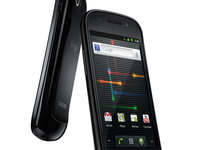 So you've read TechRadar's in-depth Google Nexus S review, you've reconciled the (now much lower) price and you've ordered the latest smartphone - now it's time to turn into a power user. Here's a round up of the secrets and tips you'll need to know to get the most out of your latest gadget, so read on to go from Android amateur to Nexus know-it-all. 1. Reclaim the comma One of the first irritations you'll encounter with the Google Nexus S is the lack of a comma - the keyboard has a voice search icon where the oft-used symbol should be.
But there's a way to reclaim it - head into Settings, and choose Language and Keyboard. Tap Android Keyboard and in there you'll see a dropdown menu labelled Voice input. From here you can select whether the voice search icon is on the front screen, the symbol menu or delete it altogether - and more importantly, the comma is back where it belongs. 2. Inbuilt battery graph A massive problem for smartphones is the battery maintenance - so many devices have offered such poor battery life that some have been rendered virtually unusable. The Nexus S isn't that bad in terms of holding its charge, but if you want to see what's happening with your battery, the phone comes with a battery graph built in.
Simply go into Settings, then tap About Phone. Open Battery Use and hit the smaller battery graph at the top - this then opens up into a fully-fledged graph complete with information on how fast your power depleted and what the phone was doing at the time. 3. Get rid of unwanted apps quickly You probably know already how to uninstall applications on the phone in the menu system. But this can take a while, and ultimately frustrate you into leaving some apps that you didn't reach. But if you open up the Android Market, you'll see a Downloads tab that shows you everything you've nabbed from Google's portal.
Choose any of these and the option to Uninstall is present in the bottom right-hand corner - the list is easier to access and quicker to use, and you can give feedback to the developer on why you uninstalled it too. 4. Boost your media experience The media experience on the Android 2.3 platform is unfortunately not that good natively - incompatibility with many file types and basic operation mar the experience. For music, we recommend MixZing - it has all the features of the Android experience but also has Genius-like abilities to mix a playlist based on a single song choice, as well as a decent inbuilt EQ make it a real step up.
For movies, mVideo Player is the one we reach for instantly whenever we pick up an Android phone. The powerful player has a high level of file compatibility, multiple bookmark options and even a slider for brightness management. You can even see the clock when viewing a video if you so wish - an oft-overlooked feature. 5. Unlock the power of voice We mentioned we didn't like the voice input icon on the keyboard, but that doesn't mean we aren't fans of voice search. From calling and navigation to text entry and Google searching, your voice can be activated by simply holding down the search key.
If you're already in an application (say text message editor) you can hit the icon to simply say your text - although you'd have to ask whether a phone call makes more sense at this point. 6. Stop the constant sipping We've mentioned battery management earlier - and there's a way you can stop it plummeting downhill instantly. If you head into the Settings menu and choose Accounts and Sync, there's a large checkbox for background data.
If you only periodically check things like social networks or email, then this is a great way to save some power, as you can get the same functionality by just manually updating when you open the app. It does mean things like push notifications won't work, but if you're after a decent battery saving and don't care about instant updates, give this a go. 7. Go 3D with Google Maps Google Maps 3D is here - well, for Cardiff and Birmingham in the UK. The new Google Maps 5.0 for Android is by far the most powerful offering so far, with the 3D vector view allowing you to zoom in and twist around certain cities from your mobile.
Other additional functions include compass orientation, for easier foot navigation, and offline caching, where the phone cleverly works out the places you frequent the most and downloads the date when you're on Wi-Fi and plugged in (ie on the nightly charge). 8. Unlock your file system Although some phones (like the Samsung Galaxy S) include an inbuilt file management system, the Google Nexus S has no such functionality. This means when you've copied media across to the phone but can't see it in the gallery you're pretty much stuffed - unless you download a file manager.
We're fans of Astro - not only is it ridiculously easy to fly through the folder branches, it can also unzip folders and search for file names - and it's free too. 9. Take a picture of yourself One of the new features of Android 2.3 is a support for video calling, and to that end the Google Nexus S has a front-facing camera to facilitate it. The problem is there's no mainstream application to let you call using the front VGA camera - but you can still use it to take pictures.
Simply fire up the camera and hit the camera switch icon in the bottom right-hand corner - you can take slightly gawpy pictures of your mug as quick as a flash. 10. Easier copy and paste Android 2.3 comes with enhanced copy and paste, making it easy to just hold down a word and see it copied to the keyboard. In text editing, you can cut or copy the word, and on the internet you simply need to long press on a phrase and drag the tabs to choose the selection you're after, with a quick tap auto-copying the text.
The tabs are now much larger and easier to manipulate as well, making it a much more simple experience when trying to move text from one place to another. 11. Check out the downloads This might sound like a simple update, but there's now a dedicated application for items you've downloaded from the internet.
It saves you having to delve into the internet browser to get pictures or applications you've snaffled from the web, and delete them easily too. 12. Bars to stop you scrollingWhen you're running through a list and get to the bottom, sometimes you're not sure whether you've reached the end or if the phone is still loading more options. Google has added in some orange flashes when you hit the top or bottom of a list as a visual cue - it's not the most piviotal upgrade, but it's certainly adds to the sheen of your phone. 13.Magic tricks with photosOK, not technically magic, but it certainly feels as cool as a card trick. When in the gallery view, you already will know that the stacks of pictures mean there's more than one item in that category - but here comes the awesome part. Put two fingers on the top of the stack, pull them apart and watch as the pics fly between your two digits - not only is it visually a veritable thrill, but you can easily see what's in there too. 14. Access the special characters with easeIf you're after a bracket or @ sign, you don't need to faff about with the symbols section - simply holding down the full stop key will bring up a grid of them. Simply slide up your finger to access new characters, including dashes, colons and the ever-popular + symbol. If you do the same with the comma key (assuming you've moved it to the front screen) then this will also offer up and easy way to see the settings for the keyboard too.
Google ushas ed the Android 2.3 upgrade to make auto-corrected typing a little easier: simply start writing a word, and when the autocorrect has an option, the space bar lights up to indicate you can confirm and use it. If you've done this, but it's the wrong word, simply tap the offending selection of letters and the autocorrect options will spring back up too. 16. Quick access to numbers and capitalsUsing the multi-touch hardware doesn't just make it easier to type faster, it adds quick flick options for speed keystokers. For instance: hold the shift key and press a letter and it will capitalise it without needing to enter the shift mode separately. Or you can hold the symbol key down and use your other finger to hit the numbers - let go and the ABC keyboard springs magically back in. |
| Updated: Google Nexus S: 16 tips and tricks Posted: 24 Dec 2010 04:40 AM PST  So you've read TechRadar's in-depth Google Nexus S review, you've reconciled the (now much lower) price and you've ordered the latest smartphone - now it's time to turn into a power user. Here's a round up of the secrets and tips you'll need to know to get the most out of your latest gadget, so read on to go from Android amateur to Nexus know-it-all. 1. Reclaim the comma One of the first irritations you'll encounter with the Google Nexus S is the lack of a comma - the keyboard has a voice search icon where the oft-used symbol should be.
But there's a way to reclaim it - head into Settings, and choose Language and Keyboard. Tap Android Keyboard and in there you'll see a dropdown menu labelled Voice input. From here you can select whether the voice search icon is on the front screen, the symbol menu or delete it altogether - and more importantly, the comma is back where it belongs. 2. Inbuilt battery graph A massive problem for smartphones is the battery maintenance - so many devices have offered such poor battery life that some have been rendered virtually unusable. The Nexus S isn't that bad in terms of holding its charge, but if you want to see what's happening with your battery, the phone comes with a battery graph built in.
Simply go into Settings, then tap About Phone. Open Battery Use and hit the smaller battery graph at the top - this then opens up into a fully-fledged graph complete with information on how fast your power depleted and what the phone was doing at the time. 3. Get rid of unwanted apps quickly You probably know already how to uninstall applications on the phone in the menu system. But this can take a while, and ultimately frustrate you into leaving some apps that you didn't reach. But if you open up the Android Market, you'll see a Downloads tab that shows you everything you've nabbed from Google's portal.
Choose any of these and the option to Uninstall is present in the bottom right-hand corner - the list is easier to access and quicker to use, and you can give feedback to the developer on why you uninstalled it too. 4. Boost your media experience The media experience on the Android 2.3 platform is unfortunately not that good natively - incompatibility with many file types and basic operation mar the experience. For music, we recommend MixZing - it has all the features of the Android experience but also has Genius-like abilities to mix a playlist based on a single song choice, as well as a decent inbuilt EQ make it a real step up.
For movies, mVideo Player is the one we reach for instantly whenever we pick up an Android phone. The powerful player has a high level of file compatibility, multiple bookmark options and even a slider for brightness management. You can even see the clock when viewing a video if you so wish - an oft-overlooked feature. 5. Unlock the power of voice We mentioned we didn't like the voice input icon on the keyboard, but that doesn't mean we aren't fans of voice search. From calling and navigation to text entry and Google searching, your voice can be activated by simply holding down the search key.
If you're already in an application (say text message editor) you can hit the icon to simply say your text - although you'd have to ask whether a phone call makes more sense at this point. 6. Stop the constant sipping We've mentioned battery management earlier - and there's a way you can stop it plummeting downhill instantly. If you head into the Settings menu and choose Accounts and Sync, there's a large checkbox for background data.
If you only periodically check things like social networks or email, then this is a great way to save some power, as you can get the same functionality by just manually updating when you open the app. It does mean things like push notifications won't work, but if you're after a decent battery saving and don't care about instant updates, give this a go. 7. Go 3D with Google Maps Google Maps 3D is here - well, for Cardiff and Birmingham in the UK. The new Google Maps 5.0 for Android is by far the most powerful offering so far, with the 3D vector view allowing you to zoom in and twist around certain cities from your mobile.
Other additional functions include compass orientation, for easier foot navigation, and offline caching, where the phone cleverly works out the places you frequent the most and downloads the date when you're on Wi-Fi and plugged in (ie on the nightly charge). 8. Unlock your file system Although some phones (like the Samsung Galaxy S) include an inbuilt file management system, the Google Nexus S has no such functionality. This means when you've copied media across to the phone but can't see it in the gallery you're pretty much stuffed - unless you download a file manager.
We're fans of Astro - not only is it ridiculously easy to fly through the folder branches, it can also unzip folders and search for file names - and it's free too. 9. Take a picture of yourself One of the new features of Android 2.3 is a support for video calling, and to that end the Google Nexus S has a front-facing camera to facilitate it. The problem is there's no mainstream application to let you call using the front VGA camera - but you can still use it to take pictures.
Simply fire up the camera and hit the camera switch icon in the bottom right-hand corner - you can take slightly gawpy pictures of your mug as quick as a flash. 10. Easier copy and paste Android 2.3 comes with enhanced copy and paste, making it easy to just hold down a word and see it copied to the keyboard. In text editing, you can cut or copy the word, and on the internet you simply need to long press on a phrase and drag the tabs to choose the selection you're after, with a quick tap auto-copying the text.
The tabs are now much larger and easier to manipulate as well, making it a much more simple experience when trying to move text from one place to another. 11. Check out the downloads This might sound like a simple update, but there's now a dedicated application for items you've downloaded from the internet.
It saves you having to delve into the internet browser to get pictures or applications you've snaffled from the web, and delete them easily too. 12. Bars to stop you scrollingWhen you're running through a list and get to the bottom, sometimes you're not sure whether you've reached the end or if the phone is still loading more options. Google has added in some orange flashes when you hit the top or bottom of a list as a visual cue - it's not the most piviotal upgrade, but it's certainly adds to the sheen of your phone. 13.Magic tricks with photosOK, not technically magic, but it certainly feels as cool as a card trick. When in the gallery view, you already will know that the stacks of pictures mean there's more than one item in that category - but here comes the awesome part. Put two fingers on the top of the stack, pull them apart and watch as the pics fly between your two digits - not only is it visually a veritable thrill, but you can easily see what's in there too. 14. Access the special characters with easeIf you're after a bracket or @ sign, you don't need to faff about with the symbols section - simply holding down the full stop key will bring up a grid of them. Simply slide up your finger to access new characters, including dashes, colons and the ever-popular + symbol. If you do the same with the comma key (assuming you've moved it to the front screen) then this will also offer up and easy way to see the settings for the keyboard too.
Google ushas ed the Android 2.3 upgrade to make auto-corrected typing a little easier: simply start writing a word, and when the autocorrect has an option, the space bar lights up to indicate you can confirm and use it. If you've done this, but it's the wrong word, simply tap the offending selection of letters and the autocorrect options will spring back up too. 16. Quick access to numbers and capitalsUsing the multi-touch hardware doesn't just make it easier to type faster, it adds quick flick options for speed keystokers. For instance: hold the shift key and press a letter and it will capitalise it without needing to enter the shift mode separately. Or you can hold the symbol key down and use your other finger to hit the numbers - let go and the ABC keyboard springs magically back in. |
| Posted: 24 Dec 2010 04:00 AM PST  When is a seven-inch tablet not a tablet? When it's strangely labelled a smartphone, like ViewSonic's ViewPad 7. At this small size it's not really competing with the iPad scale of tablets, more the Dell Streak and Samsung Galaxy Tab. Like those two devices, the ViewPad 7 is running Android, this time in 2.2 trim. But the strange thing is that ViewSonic is marketing this as a smartphone rather than as a tablet. Admittedly, you can slap a SIM card into the top of the ViewPad and it will operate like a phone, but you'll get a bit of the Dom Joly's should you use it in the street. We've actually already seen this device under a different name. Like the ViewPad 10, this seven-inch edition has simply been picked up lock, stock and barrel by ViewSonic from an OEM manufacturer and renamed. In its previous guise it was the Linx Commtiva N700, a £330 tablet that got a decent four stars. So what has ViewSonic done with it? Seeing as the ViewPad 7 costs more than the same device under Linx Commtiva N700 nomenclature you'd expect to be getting a bit more for your cash. Unfortunately the only real difference between the two bits of tablet tech is what's been removed from the ViewPad 7 bundle. The N700 comes with a 4GB microSD card to bolster the paucity of internal storage in the machine itself, but there are no such goodies with the ViewSonic version. Other omissions are less tangible, such as the lack of a Swype keyboard. The keyboard that replaces it is an awkward beast. The main difficulty we had was when trying to search from within the Froyo browser where the space bar was replaced by a shortcut that added www.*.com around anything we typed. This is less than helpful unless you only ever search for single words. You can however get £100 off until March 2011 with a rebate should you send a functional laptop/netbook back to ViewSonic once you've got your ViewPad 7. So price-wise it's not too bad if you've got a machine less than four years old that you don't mind parting ways with. The problem we still have with it, though, is the smartphone branding. We did genuinely try to use it as such for 24 hours in place of another Android phone. The experience wasn't great… Our main issue was that we had some connection issues. On HSDPA, SMS messages weren't getting sent for some reason. Switching down to a slower mobile connection was the only solution, which then robbed it of the smartphone-on-the-move internet capabilities. We also felt like a bit of a tool standing in a busy street shouting at the side of the ViewPad 7 where the microphone was, then pressing one of the stereo speakers to our ear. We could've used the bundled headphone/mic set from the box, but that's not necessarily easy to fumble about with when you're trying to answer a call. But still, it's not a bad device. The battery life is fine and the build quality is fairly good, too. The only real problems with the hardware itself are the slower CPU and the ropey screen. That 600MHz ARM CPU is unable to cope with the minimum requirements necessary for Flash playback, or for the upcoming Gingerbread version of Android. Or for the smooth playing of Angry Birds… Our other issues are more based around its usage. Realistically if you're in the market for such a mobile internet device then you'll spend the cash on a decent actual smartphone before dropping £300-£400 on this. And if you've already got a decent smartphone you're unlikely to take the time to pick up the ViewPad instead for whatever you want to do. In short, the ViewPad 7 is mostly unnecessary. We liked At £300 it's not a bad price, and with Android 2.2 and Google Market on board it's not a bad little tablet either. We disliked If you've already got a smartphone, you'll more likely use that first for anything you'd do on the ViewPad 7. At seven inches it's a bit of a half-way house between a proper tablet and a good phone, in the end competing with neither. Related Links |
| Posted: 24 Dec 2010 03:30 AM PST  The TwistDock is, put simply, a stand and controller charging port for your PlayStation 3. It's circular and twists around so you can reach the controllers, which sit hidden behind your PS3. It's designed to look good, feel premium, and keep things tidy. However, you'll definitely pay for that high-end feeling. The dock itself will cost around £80, with the USB Hub and Cable Set add-on packs both coming in at around £30. We had the full set to play with, so let's see if it's really worth £140. The basic TwistDock is a round stand with two controller holders in the back. To charge your controllers, you have to attach a little add-on to the top of them that slots into their USB port. This has some contacts on it that press against matching contacts on the TwistDock. We can guess why they didn't just put USB plugs on the TwistDock: because it's premium. But it would have been simpler. Two lights on the front of the dock tell you whether the controllers are charged (which is actually quite good). To charge your controllers. the TwistDock naturally needs some power. It comes with a European mains plug, which slots into a UK adaptor. The two really don't look like they've been designed to sit together. They're loose, wobbly and awkward, but didn't actually fall apart in our time using the dock, so escape total condemnation. There are two USB ports on the back of the TwistDock, so you could charge two more controllers or… um, your phone? These USB ports don't do anything other than power, so they're no good for PS3 accessories that send information to the console. The USB Hub pack, which adds data functionality (for more money!), actually comes with a new mains adaptor with more power than the TwistDock's original to give the necessary juice to the extra ports. Why didn't they just make the original stronger? The hub was an absolute pain to get slotted into its hole properly, but we eventually got it in and working. The PS3 had no trouble spotting any peripherals we attached. Now, the TwistDock's cunning plan to keep your PS3 tidy is to run all cables under the console, through the centre of the dock, under it and out the back. However, to make this really work, you'll need the TwistDock Cable Set, which includes an HDMI cable and a PS3 power cable, both with plugs at right angles. Your PS3's normal plugs, being straight, will cause the cables to loop quite far out before they come back under the dock to be hidden. "Why, that's not tidy at all!" the TwistDock people probably said. "Let's provide alternative cables that don't loop out thanks to their right-angled connectors, and charge more for them." There are two problems here. The first is that you have to pay more. Again. The second is that the provided power cable is the two-pin figure-eight kind used by the PS3 Slim. The old-style PS3 uses the chunky three-pin kettle lead, making 50 per cent of the Cable Set totally useless to any original-style PS3 owners. On the plus side, the HDMI cable is really well built, and works just fine. On the down side, jamming the kettle-lead cable through the whole in the TwistDock clearly meant for a smaller plug is a damn pain. Especially since the HDMI cable is so thick and covered that it takes up half the space itself. Apart from this oversight, the TwistDock does work well for both flavours of Sony's machine. And, yeah, it looks good. It's a convenient way to hide your controllers and charge them at the same time. It's also pretty expensive to begin with, and then you need to add two accessory packs if you want USB data functionality or cables that don't stick out. The TwistDock is easy on the eye and nice to have around, but it only stays interested in you if you keep spending money on it. As far as we're concerned, it's just too fiddly and awkward to really be the premium product it wants to be and justify how expensive it is. Related Links |
| Opinion: My dad is more tech than me Posted: 24 Dec 2010 03:07 AM PST  I have a confession to make: my dad is more tech than me. It never used to be like this. I was always the one with the games consoles, latest MP3 player and camera. I was the one that got him into DVDs – showing him that, unlike, VHS, they don't take an age to rewind, can't be chewed up (I skipped the part about them being scratched) and they have this magical thing called special features. It was the same with Blu-ray. But then something changed; the apprentice became the master. Having not lived at home for more than a decade, each time I come back my parents have got some new fangled tech to show off. Apple iPod touch? Check. iPhone? Yup. Nintendo DSi – he's got one of those too. The latest purchase is a 50-inch Samsung 3D TV and 3D Blu-ray player, something I am staring at with envy right now writing this. The logic behind the buy is actually pretty sound – the shop he bought it from had an offer on that made the TV cheaper to have than a non-3D one. Saying that, it is a big purchase. Too big, as he apparently went white when the TV was delivered, knowing it was too big for the room. Like all dads, though, he sorted out this problem… by sawing off the legs of the stand so it is lower to the floor. The whole thing will probably collapse if you breathe on it, but this 30cm adjustment has probably saved his marriage to my mum. Deep into technology I have been pretty blessed in the last two-and-a-bit years working at TechRadar, trying out the latest technology years before it hits the shop and, in all honesty, a sense of jadedness does seep in from time to time. It's not that my love affair for technology is ending, it's just that I am more enthused about products that aren't out yet. While I am clinging on to the (increasingly unlikely) possibility that the PSP Phone being amazing, 3D is hitting living rooms. This is something that brings the 'wow' factor to people like my parents, like it did to me back in 2008. But this doesn't mean I don't want it. Seeing this 3D TV in my folk's house has brought out my jealous side. And knowing what my mum has got my dad for Christmas (you can probably guess given the above list) has me even more craving the technology he is stockpiling in his home. My dad is now so tech, he uses his iPhone for sat nav in his car (the original sat nav is probably now gathering dust in the boot) and he has rigged up the lights in my parent's three bedroom semi detached house to dim when he wants them to; this switch also currently controls the Christmas tree. I haven't quite worked out how to turn the Christmas tree lights on yet because of this. Mum won't be happy. Have you turned it off an on? My only saviour in this is that I get to play with all the toys when I come home. Play and actually show my parents how they work. Last year it was how to stop the iPhone constantly synching with the computer. This year it is showing that they can convert 2D TV to 3D via the television. Jeremy Kyle has never looked so in your face. I still wake up in cold sweats, remembering the time I tried to explain to my mum how to get music on to the frankly rubbish MP3 player my dad got her for her birthday one year. I wrote her a five-point checklist to keep with her at all times. She was over the moon. Then lost the list and bought an iPod. I also sorted out the Sky+ HD box, last night as it was playing up. I only turned it off and on but it worked and they are happy. Considering the mountain of tech procured, TechRadar is barely read in this household. I've always been confused about this, as there's some stuff on the site my dad would love. But he seems to want to work things out for himself and listen to what the folks in Currys think than looking it up on the web – something I think a lot of parents still do. There may be a point when I overtake my dad when it comes to technology but, at the moment, his disposable income wins out, as does the amount of time he has on his hands to enjoy these gadgets. At least my mum isn't as tech savvy. She's only got the iPod, netbook, Freeview PVR… I have a confession to make: my mum is more tech than me. |
| In Depth: TechRadar's best kit of 2010 Posted: 24 Dec 2010 03:05 AM PST  We review a lot of products each year here at TechRadar, putting each and every one through its paces thoroughly to ensure we give you the best possible advice. Now we're at the end of 2010, it's time to look back at the very best kit we saw. These are our picks of the most impressive examples of each type of tech, and are the ones we'd happily spend our own money on. TV - Philips 21:9 Platinum 58PFL9955H
Philips' flagship HDTV is admittedly pricey at £4,000, but you get some incredible performance for that money. Listing all of the features of this TV would take forever, so let's just say that the 21:9 aspect ratio (which is perfect for movies), 58-inch screen, direct LED backlighting and 3D capability all come together to make the most visually stunning screen you can buy. It's simply the ultimate home cinema TV. Read TechRadar's full Philips 21:9 Platinum 58PFL9955H review Blu-ray player - Sony BDP-S370
With this Blu-ray player, Sony seems to have found a balance of price and performance we never thought possible. It boasts nearly flawless HD pictures, remarkable upscaling skills of regular DVDs and the ability to play high-quality HD on-demand content from BBC iPlayer – and you can find it for only a little more than £100 these days. Read TechRadar's full Sony BDP-S370 review Freeview receiver - Humax HD-FOX T2
When we first reviewed this Freeview HD receiver back in February, we were pleased with its general performance, but couldn't help but be disappointed at the lack of recording capability. Humax has since added a firmware update that enables you to add an external hard drive to record, nailing that problem beautifully. In fact, we're even told that Humax will throw in a free hard drive, making this box almost impossible to resist. Read TechRadar's full Humax HD-FOX T2 review Phone - HTC Desire
The really great thing about the HTC Desire isn't its impressive spec sheet, intuitive HTC Sense interface or superb build quality. What gets you most about the Desire is how it represents the maturation of the Android operating system from geek-favourite upstart to feature-rich world beater, and there's no better handset to enjoy it on. Read TechRadar's full HTC Desire review Tablet - Apple iPad
Though tablets aren't new for 2010, you'd think they were the way the world has gone crazy for the iPad since its launch and the slew of competitors now coming out. However, everything else has proved to be a pale comparison of the elegance of Apple's stunning slate. With more features added in the update to iOS 4.2, it simply outshone any and all rivals. Read TechRadar's full Apple iPad review Compact camera - Panasonic Lumix TZ10
The TZ10 surely represents the pinnacle of what consumer compact cameras can be. The feature list is exemplary, including geotagging, HD video recording, manual controls and a massive optical zoom, but more important than all that is the incredible picture quality. When you find out that it comes with a price tag of less than £250, it really becomes hard to look at other compacts with anything other than disappointment. Read TechRadar's full Panasonic Lumix TZ10 review Media player - Apple iPod touch (4G)
If there's one area other than tablets that Apple is way out in front of the competition on, it's personal media players. The latest iPod touch takes just about all the best bits of the iPhone 4, such as the pin-sharp Retina display, the powerful A4 processor and HD video recording, and puts them in a slimmer, lighter and cheaper body. And that's before we even to get the single biggest advantage the iPod touch has over its rivals: the App Store. Read TechRadar's full Apple iPod touch (4G) review Sat nav - Garmin Nuvi 3790T
Making sat navs sexy is usually a pretty pointless exercise, but Garmin has just about performed the impossible here. The Nuvi 3970T has a simply brilliant interface and excellent features, such as PhotoReal junctions. If you ever take a wrong turn again, it'll be because you were admiring your sat nav instead of following it. Read TechRadar's full Garmin Nuvi 3790T review Laptop - Alienware M11x
The draw of the M11x is simple. It's a full-blown gaming computer, with a 1GB graphics card and Intel Core i3/i5/i7 processors, that weighs just 2kg. The sheer ambition of the task alone is worth some kudos, but the fact that it actually makes a damn good gaming centre is nothing short of witchcraft. Read TechRadar's full Alienware M11x review Desktop - CyberPower Game Cube
The dinky size of the Game Cube is certainly impressive, but what's amazing is that it packs an Intel Core i5-760 processor and Nividia GeForce GTX 460 graphics card. Considering that these two components are our pick for 2010's best processor and graphics card respectively, it's no surprise this desktop totally won us over. Read TechRadar's full CyberPower Game Cube review Processor - Intel Core i5-760
This is the ultimate gamer's chip. Capable of handling all sorts of overclocking abuse just on air cooling, and easily able to hit 4GHz for those who really want to get into it, there's just no better mix of price and performance. A special mention has to go AMD's Phenom II X6 if what you're after is pure multithreaded performance. Read TechRadar's full Intel Core i5-760 review Graphics card - Nvidia GTX 460 1GB
Like the Intel Core i5-760 above, this Nvidia gets our vote because of the unmatched price to performance ratio. We simply can't see any reason to go for anything else in its price range. Perhaps most impressive of all is that awesome SLI performance means that is even a force to be reckoned with at the higher end of the market. Read TechRadar's full Nvidia GTX 460 1GB review Motherboard - Asus PX58D-E
Intel's highest-end socket 1366 processors are absolute beasts when it comes to potential performance, but it can be an expensive business to get into. With that in mind, we can't recommend this X58 board from Asus highly enough. It's got high-end performance at a low-end price. We should say, though, that it isn't compatible with the Intel Core i5-760 we've recommended above, so if you're taking our advice there (and you should) take a look at the Asus P7P55D, for pretty much the exact same reasons we've picked this one. Read TechRadar's full Asus PX58D-E review PC monitor - BenQ EW2420
This BenQ monitor feels like some sort of glorious anomaly. At this price, we're used to twisted nematic (TN) panel technology that offers good, but not great, performance. If you're willing to pay a fair bit more money, you can get far better performing vertical alignment (VA) panels. Apparently, nobody told BenQ that this is how it's supposed to work, because it's just released this VA panel right in the middle of the TN price point. The instant this screen was released, this category was done and dusted. If you're spending around £150 on a screen and you don't get this one, we would seriously question your sanity. Read TechRadar's full BenQ EW2420 review Sound card - Asus Xonar DG
This sound card is a perfect example of how to win over a cynical test reviewer's heart. The Xonar DG offers a huge upgrade in sound quality over built-in options, for an outlay small enough to be an impulse purchase. If you're a gamer getting by with on-board sound when this is available for less than the cost of a single game, hang your head in shame. Read TechRadar's full Asus Xonar DG review Printer - Canon PIXMA iP4850
Sometimes, technology doesn't need to be the most elaborate or highly specced machine to be the best. This Canon printer isn't all-singing all-in-one machine with scanner and fax. It isn't a network-connected home office productivity wonder. It's simply a colour printer that produces absolutely stunning results consistently for a very reasonable price, and offers great ease of use thanks to dual paper feeds and auto duplex printing. Read TechRadar's full Canon PIXMA iP4850 review |
| Sony Ericsson likely to demo PSP phone in January Posted: 24 Dec 2010 02:32 AM PST 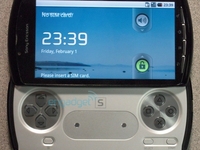 Hot on the heels of sending out an invite for an Xperia experience at Mobile World Congress, Sony Ericsson has invited UK media to a briefing on 6 January about 'how Sony Ericsson plans to enhance the Android experience for consumers'. The Japanese-Swedish alliance will 'share its plans for 2011, including what's in-store for the Xperia line of devices' showing that there's certainly going to be more than one in the near future. The obvious device to be shown off is the Sony Ericsson 'PSP phone', although that could well be called the Sony Ericsson Xperia Play after numerous domain names around that moniker were snaffled up by the company's Swedish PR team. What does Play mean to you? Alternatively Xperia Play could be the dedicated portal for the gaming experience on SE's phones - such a thing will need to be created if a specific gaming phone is created. Sony's head honcho Kaz Hirai has weighed in on the debate too - showing that the 'PSP phone' will likely be kept separate from the main Sony gaming brand for now. "We don't want gamers to be asking, what's the difference between that [a PS phone] and a PSP... we have to come up with a message that users will understand," he said, according to the New York Times. "It would have to be a product that keeps the PlayStation's strengths intact." So roll on January 2010 - we want gaming phones, tablets and all the bits in between. |
| Sports and music is the key to popularity on Facebook Posted: 24 Dec 2010 02:10 AM PST  Data crimped from Facebook has found that if you want people to Like your status and become your friend, then writing about sports and music is the key. Facebook looked at 1 million status updates (stop seething, they were all anonymous) and found that those who were 'popular' on the site liked to use the pronoun 'you' and speak about music and sports. It seems that they are also all about themselves, preferring not to speak about their family and they are emotionless in their updates. "Word usage of more 'popular' people also differs from people with a lower friend count," said Facebook. "They write longer updates, and use more words referring to music and sports. More 'popular' people also talk less about their families, are less emotional overall, use fewer past tense and present tense verbs and words related to time." They sound like idiots to us. A lot of negativity Facebook also found that if you use negative comments in your update, then this will garner less Likes but it will increase comments. "Positive emotional updates receive fewer comments – perhaps there's nothing more to say," says Facebook. "Negative emotional updates receive more comments – perhaps as a consolation." So if you want to be popular, receive lots of comments and Likes, we suggest you say in your status update: "I hate sport, music and you. But I really like being liked." For more information on the status update breakdown, head over to the Facebook blog. |
| Review: Qnap TurboNAS TS-295 Pro Posted: 24 Dec 2010 02:00 AM PST  Powered by an Intel Atom dual-core processor, the Qnap TurboNAS TS-259 Pro is designed for the business or home office user. It's available with two, four, six or eight drive bays, and supports 3.5-inch and 2.5-inch hard drives, but is supplied as a bare enclosure. We're reviewing the two-bay model. Although it caters for DNLAcompatible and iTunes media streaming, the Qnap TurboNAS TS-259 Pro isn't ideal for home use. Its office and home business features, however, are impressive. You can use it as a surveillance station, connecting multiple IP cameras for remote monitoring. You can also connect up to three printers for networked printing, and run an FTP or web server for sharing files. File sharing is available across Windows, Mac, Linux, and UNIX platforms, as is WebDAV for remotely accessing shared folders via the HTTP/ HTTPS protocol. With two eSATA ports, twin Ethernet sockets, four USB ports at the back and another on the front, it's expandable too. Comprehensive backup solutions include support for cloud-based storage. The TS-259 Pro is Time Machine compatible for Mac users, and includes the QNAP-exclusive Windows-based NetBak Replicator utility. Your data can be backed up to or received from other Turbo NAS or Rsync servers over the network using encrypted remote replication. The TS-259 Pro is easier to use than its predecessor, the TS-239 Pro, but it's not for total beginners. It's also a little expensive for its spec, but business users will love it. Related Links |
| Google and NORAD to track Santa again Posted: 24 Dec 2010 01:55 AM PST  Google will yet again be using its various tools, including Google Maps, Google Earth and YouTube to track Father Christmas on his journey across the planet this Christmas Eve. The search giant loves Christmas, and tracking Santa with a little help from NORAD (North American Aerospace Defence Command) has become as much a tradition as presents under the tree and hangovers on Boxing Day. Well, sort of. "Every Christmas Eve, children all over the world ask themselves - and their parents - questions about Santa's magical journey, blogged "Original Google Engineering Elf" Brian McClendon. "How does Santa visit so many children in one night? Will he eat the cookies I left out? How does he fit all those presents into his sleigh? These childhood mysteries are part of what makes the Santa tradition so special. "There's one timeless question that we're proud to say we can help answer: Where in the world is Santa at this very moment? "Thanks in part to recent advances in warp-speed GPS technology and some very clever elves (elveneering?) NORAD Tracks Santa is once again prepped and ready to go." You can track Santa in various ways, using some of Google's sites, Facebook, Twitter and even on your mobile phone. See Santa on a Google Map: On your home computer or laptop, visit www.noradsanta.organd choose your preferred language. You'll see a large Google Map on the page displaying Santa's current location and his next stop. Click the video icons to watch "Santa Cam" videos, and click the gift icons to learn more about each city. Watch Santa fly with the Google Earth Plug-in: From www.noradsanta.org, click on the link Track Santa in Google Earth. You'll see Santa steering his sleigh right on the webpage. If you don't have the Google Earth plug-in, you can get ready by downloading it ahead of time. Follow Santa on your phone: Track Santa from your mobile phone by opening Google Maps for mobile and searching for [santa]. Or, visit m.noradsanta.orgon your phone's browser. Get real-time information about Santa's location: Use Google's Realtime Search to get updates from social networks, news and micro-blogs like Twitter at @noradsanta, and keep up with news about his journey on this Facebook page. |
| Review: Sumvision Cyclone MKV2 HD Posted: 24 Dec 2010 01:30 AM PST  About the size of an external hard drive, but with no internal storage (it's easy to add some), the MKV2 – not to be confused with the earlier MKV v2 – sports logos for everything from Dolby Digital and HDMI to Real HD and Matroska. The latter suggests that the MKV2 is merely for playing that container format on a TV, but it offers more than that. Although it's sharply presented, the UI is baffling at first and uncomfortable to read. Still, the MKV2 makes the necessary connections quickly and is streaming files in seconds. The experience lacks polish though – the 'browser' is a simple list of sources, and the software is slow to react when you press a button on the small remote. We did like the MKV2's presentation of a thumbnail of each video file, complete with sound. Streamed over UPnP, the MKV2 plays video files of almost every format, only stuttering with some MOV files and older WMVs. Video is handled well, loading quickly and playing smoothly. There's plenty of detail on show in a DivX HD file, and little picture noise. We also tried a MOV file filmed on a phone and the result was excellent, even on a big TV. As far as the internet options go, you get basic access to weather, Picasa, Flickr and RSS news feeds, the latter containing shortcuts to CNN, NPR and BBC, though your own feeds can be added manually. The only other feature provided on the home screen is an option to transfer files between various sources, including an HDD. Still, it's cheap, and despite its decidedly low-rent feel, the MKV fulfils its brief for less than the others here. Related Links |
| Skype still struggling with outage Posted: 23 Dec 2010 09:46 AM PST  The great Skype outage of 2010 continued long into Thursday with a large proportion of users still struggling to maintain connection to the popular VoIP service. In a situation, which strangely mirrors the UK travel chaos caused by the snow, some Skype users are up and running again while others remain stranded, unable to make free voice and video calls or send instant messages. On the company's official blog Skype's Peter Parks revealed that an estimated 10 million users were now back online, but that features may not work as efficiently as normal. The post read: "In the last hour, we've seen evidence of a significant increase in the number of people online. Because of the way the Skype software works, it's not possible for anyone to obtain an exact figure, but we now estimate it to be over 10 million. "Please note that some features may not work as reliably as expected – peoples' online status may be slow to update, and instant messages might not be delivered as quickly as they are normally. Group video calling will take longer to return to normal." Christmas woe On Wednesday the company had apologised for its first major outage since August 2007, which left many users unable to reach their loved ones at Christmas forcing them to explore other providers. Skype says its engineers are working hard at creating 'mega supernodes' - allowing individual connections between computers and devices - in order to restore service. The company is telling users to keep checking the Skype Twitter feed for the latest information surrounding the mysterious outage. |
| Buying Guide: 20 best mobile phones in the world today Posted: 23 Dec 2010 08:39 AM PST 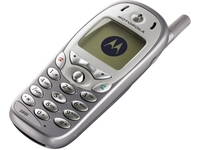 Our verdict on the best mobile phones / best smartphones - constantly updated We've all got at least one mobile phone each, right? The trouble is, how do you decide which is the best mobile phone for you? Hopefully, TechRadar's extensive mobile phone reviews can help you with that. But if you're still stumped, you've come to the right place. Because here we have a constantly-updated list of the best mobile phones you can get. Whether you're after the best budget music phone or a the best smartphone, the top ones are all here. And we've got in-depth reviews of all of them. Here are our rankings for the best mobile phones around, currently available in the UK. ------------------------------------------------------------------------------------------------------ Sponsored: Travel the universe from the comfort of your PC ------------------------------------------------------------------------------------------------------
20. Apple iPhone 3GSWell, there's just so much to like about this all rounder, isn't there? We could choose the excellent internet, the new camera that's almost is good enough to make us stop moaning about the iPhone always having a rubbish snapper (but not quite, though we do love the autofocus). We could talk about the increase in speed over previous iterations or the great graphical processing power of the iPhone 3GS. We could even chat about the fact voice control is good, but a little bit pointless 90 per cent of time. However, we think it's best to say that the best thing about the iPhone is it's an all rounder, the phone for every demographic. While it does some things wrong, it more than makes up for it with the things it does right - we just wish it was a little bit cheaper. Our quick verdict: Aside from video recording and a compass, the 3GS didn't add a huge amount to the family. That said, after the launch of the iPhone 4, it's not that much cheaper than the current device, and given the huge step up in technology Apple's latest phone achieved, the iPhone 3GS represents nothing more than a slightly more budget version of a very good phone. Read: Apple iPhone 3GS review If you like the Apple iPhone, you might also like:
| ------ HTC Legend ----- | ------ iPhone 4 ------ | ------ HTC HD2 ------ | ------------------------------------------------------------------------------------------------------ Sponsored: Travel the universe from the comfort of your PC -------------------------------------------------------------------------------------------------------
19. Nokia N900The Nokia N900 is actually a re-entry into our top 20 mobile phones, which shows the enduring power of this seemingly unloved Nokia child. It's not a phone for everyone, that's for sure - it's chunky, has a resistive screen, uses an OS that no other device does - but it's been a mainstay among fans due to the sheer amount of stuff you can do with it. Modders and hackers love being able to do things like write programs to control your TV using the infra-red port, or use the blindingly simple music streaming or RSS feeds. There's also a top notch QWERTY keyboard underneath, and as much multi-tasking (with big thumbnails) as you could like, and that's before we even talk about the fact you can get Firefox mobile on there and soon the next-gen MeeGo OS. Our quick verdict: It's an odd phone the Nokia N900 - it's not got the same exposure as the like of the Nokia N8 for instance - but for the sheer range of functionality and easy to use features, it's quickly becoming something of a modern cult classic. Plus the launch of the N8 means great deals on the N900 too! Read: Nokia N900 review If you like the Nokia N900, you might also like:
| ----- BlackBerry Storm 2 ---- |---- Motorola Milestone ----| ---- HTC HD2 ----- | ------------------------------------------------------------------------------------------------------ Sponsored: Travel the universe from the comfort of your PC -------------------------------------------------------------------------------------------------------
18. Samsung WaveSamsung has made the somewhat left-field decision to launch its own OS and, with the new Samsung Wave, it gets a phone with top-notch hardware to debut it on. This isn't just another 'and me' Samsung phone – it's crammed to the hilt with high-end features, such as HD video recording, a 1GHz Samsung-made Hummingbird processor, a super-slim chassis, the latest Super AMOLED screen and multi-touch support right out of the box. However, it's still rocking Samsung's TouchWiz overlay, which is great if you like Samsung phones, but a very different experience for those joining the Korean giant for the first time. It's not got the market penetration of the Samsung Galaxy S, but for those that have picked it up it's a great offering for those on a tighter budget - plus it has the scarce AMOLED screen on board too. Our quick verdict: The screen is ace, the chassis feels slimmer than the iPhone 4 and the processor whips along at a nice pace. Sadly, the new Bada OS is too nascent to be seen as a contender, but this is a phone that hopefully more people will be hankering after as the app store increases. Read: Samsung Wave review If you like the Samsung Wave, you might also like:
| -- Samsung Galaxy S -- | --- HTC Desire --- | ----- iPhone 4 ----- | ------------------------------------------------------------------------------------------------------ Sponsored: Travel the universe from the comfort of your PC -------------------------------------------------------------------------------------------------------
17. HTC LegendThe HTC Legend is the follow-up to the super-successful HTC Hero. For many months, the Hero was the top dog in the Android world. But with the arrival of the HTC Legend and Desire, that was always going to change in 2010. Featuring a high-res OLED screen, as well as the latest version of Android from Google, HTC clearly set out the Legend to be the beautiful one in the family. The phone also packs a sumptuous unibody aluminium chassis – taking more than a few visual cues from Apple's MacBook range. The sad thing is with the launch of the HTC Desire at the same time, the Legend sort of got lost in the fog. Add to that the lack of live wallpapers and no Android 2.2 update as yet, and you can see why it's slipping down our list. However, it's still a fantastic Android phone and one you'll be proud to pull out in the pub, so make sure you consider this in your smartphone choice. Our quick verdict: The Legend might not have the impressiveness of the Desire, but that doesn't mean it doesn't shine in its own light. The aluminium unibody is brilliant and despite having a much 'slower' processor, the lag is minimal on this Android 2.1 device. Read: HTC Legend review If you like the HTC Legend, you might also like:
| ------ HTC Hero ------ | ---- Apple iPhone 3GS ---- | ---- HTC Desire ---- | ------------------------------------------------------------------------------------------------------ Sponsored: Travel the universe from the comfort of your PC -------------------------------------------------------------------------------------------------------
16. BlackBerry Bold 9780What does the BlackBerry Bold 9780 add over the original 9700? Well, not a lot if we're honest - BB OS 6.0 and extra RAM plus an upgraded camera are all that's on offer, and don't forget the original 9700 is getting the OS 6.0 upgrade in the near future too. But it's still the best BlackBerry device in this form factor on the market, and the extra power really translates into a decent media experience - we just wish that internet browser was a bit better though. Our Quick Verdict - the Bold 9780 is on our list in the place of the original 9700 - it doesn't add enough to break into the top ten, but at least BB OS 6.0 is a step in the right direction and in its QWERTY/non-touch category, it can't be beaten. Read: BlackBerry Bold 9780 review If you like the BlackBerry Bold 9780, you might also like:
| ----- BlackBerry Torch 9800 ---- | ---- BlackBerry Bold Pearl 3G ----- | ----- BlackBerry Bold 9700 ---- | ------------------------------------------------------------------------------------------------------ Sponsored: Travel the universe from the comfort of your PC ------------------------------------------------------------------------------------------------------- |
| Virgin Media announces new 3D content Posted: 23 Dec 2010 08:06 AM PST  Virgin Media has announced its 3D content for the coming months, with the cable giant ramping up its on-demand offering. Although it does not offer a 3D channel, Virgin Media insists that it is building on its 3D content for those people with a 3D capable television. The latest content announcement from the company includes 3D documentaries for its XL TV customers, 3D animations available to all Virgin Media TV customers and on-demand pay-per-view movies. In The Hole! The latter includes The Hole, arriving on 17 January and Despicable Me which will be arriving in February. "This exciting new line-up ofcontent will enable Virgin Media TV customers to experience a close-up of the Sun, explore the lost world of the dinosaurs, uncover the secret world of bats and rediscover the Pharaohs of ancient Egypt all in breathtaking high-definition 3D," said Virgin Media. "Virgin Media customers already have access to a range of 3D movies through its pioneering TV On Demand service and can now choose to enjoy a growing selection of diverse 3D content instantly at the touch of a button." We're all looking forward to The Extreme Nature Bats and Waking the T-Rex: The Story of Sue. 3D documentaries available to XL TV customers only
3D animations available to all Virgin Media TV customers
3D Movies on Demand – pay per view
|
| Steve Jobs named Financial Times person of the year Posted: 23 Dec 2010 07:50 AM PST  Steve Jobs, head honcho of that little known company Apple, has been crowned 'Person of the Year' by the Financial Times. Apple seems to have been coated in Teflon during the current economic crisis, and it is Jobs who is reaping the success of this. The Finacial Times decided to give Jobs its coveted award, due to the success of the Apple iPad – which has opened up a new category of computer / bandwagon for the rest of the tech world to try and jump on to. iPadd-ed out the rest of this article The FT said that Jobs' iPad success is "the culmination of an approach that he has seemingly been perfecting for his entire career." It also noted that Jobs is "a stern taskmaster who understands the art of the possible, rather than a long-range visionary." No we have no idea what that sentence means either. The FT also said that Jobs is "pushing forward rather than milking old successes – even ones as significant as the iPod." So that's the secret of success: take your best device ever (the iPod), make it bigger and you have a whole bag of win. |
| Updated: Best Android phone - which should you buy? Posted: 23 Dec 2010 07:16 AM PST  Our verdict on the best Android phones - constantly updated There's one key way in which Android is massively different from its Apple-branded smartphone competition - the number of phones out there running Google's hot mobile OS. Samsung makes loads of them. Sony Ericsson makes a few. Then you've got Android-powered phones from Acer, LG, Huawei and many others, while HTC releases more in a month than all the rest added together manage in a year. The many variations in screen size, processor power, software features and design makes finding the best Android phone for you extremely tough. Do you physically and emotionally need a QWERTY keyboard? Are you the sort of oddball who prefers the rough pressing needed to make resistive touchscreens work? Do you actually like Orange widgets? To help find the best Android phone for you, we've rounded up the ten best Android handsets out there today, rating the phones on hardware performance, OS upgrade potential and, of course, how shiny and nice they are to have and boast about to work colleagues. So here they are - the ten best Android phones money can buy today. For many, many different reasons. 10. Samsung Galaxy Apollo i5800
A solid mid-range Android 2.1 performer. The main selling point of this cheaper Samsung Galaxy is its superbly responsive touchscreen - you can almost type on it by shaking out flakes of dandruff onto the screen it's that sensitive to the touch. Samsung's always generous with its video codec support, meaning the Apollo plays most ripped internet AVIs with ease, plus the Samsung-developed Lock screen music player control is a godsend for music fans. Sadly there's only a 3.2 megapixel camera inside which isn't ideal - but there is a welcome macro mode. So you can take nice photos of moths and bees and send them in to John Craven. Our quick verdict: A capable processor, good screen, relatively new version of Android - and it's out there for under £20 a month on contracts. Read our full Samsung Galaxy Apollo i5800 review 9. Motorola Milestone 2
The Milestone was a so-so phone in some people's eyes, but a few hardware tweaks and the addition of Android 2.2 has recharged it for the sequel. The Motoblur interface might be a bit bloated for some, but the processor is able and speedy and the media experience is top end for a phone of this calibre. Fans of a QWERTY will like the responsive keys, but the larger-fingered among us might struggle a bit. Our quick verdict: One of the best QWERTY devices out there, the Milestone 2 combines a top end Android experience in a surprisingly svelte package. Read our Motorola Milestone 2 hands-on 8. HTC Legend
The HTC Legend has a slightly underpowered by today's standards 600MHz processor and its users are still very impatiently waiting for HTC to upgrade the thing to Android 2.2 - but if you want a phone that's more stylish than the crowd this is the one. HTC's Sense user interface is on here and as slick and professional as ever, plus there's a decent 5 megapixel camera along with your usual 3G 7.2Mbps max download speeds and GPS. But it's all about the beautiful, aluminium body. If you want an Android phone you can proudly put on the pub table next to your friends' flashy iPhones, this is it. Our quick verdict: Starting to show its age internally, but remains HTC's finest design moment on the outside. If HTC gets Android 2.2 on this soon, the Legend will still be worth proudly owning in 2011. Read our full HTC Legend review 7. Sony Ericsson X10 Mini Pro
We have to put at least one QWERTY phone in here, and as the HTC Desire Z isn't out at time of writing it'll have to be the charming little Mini Pro. At first fiddle the Mini Pro seems like it'll be way too small to function as your everyday smartphone. The 2.5" screen puts it right at the bottom of the Android tech spec comparison tables - but the QWERTY keyboard means you tend to use the phone in landscape mode, making everything appear more roomy. Plus half the screen isn't taken up by a software keyboard when typing. The processor handles this tiny display perfectly, resulting in a minuscule phone that's perfectly usable and surprisingly fast in operation – and Sony Ericsson's Android customisations are the model of usability. Our quick verdict: Not for those of you with dirty great sausage fingers, but a great little smartphone for dainty-fingered phone fans who long for the ease of typing on a QWERTY. Currently only on Android 1.6 - but is scheduled to get 2.1 before the end of the year. Read our full Sony Ericsson X10 Mini Pro review 6. HTC Desire Z
The HTC Desire Z brings the screen size of the Desire, drops the processor and whacks in a QWERTY keyboard, and roars in at number six on our list. The solid build quality (hinge aside) and the next generation Sense UI make it a real fan favourite already, and the contract prices aren't too bad either for a top-end phone. Our quick verdict: If you're into a QWERTY, then this could be your favourite phone, with customisable buttons and speedy operation. Read our full HTC Desire Z review ------------------------------------------------------------------------------------------------------- Sponsored: Travel the universe from the comfort of your PC ------------------------------------------------------------------------------------------------------- 5. Orange San Francisco
This one defies all logic. You can currently pick up the Orange San Francisco for £99 on a SIM-free basis, which means it costs around one quarter the price of most of today's top-spec Android phones like the HTC Desire. But what you get here is no cost-cutting budget phone. The San Fran has a high-res 3.5" capacitive touchscreen, features Android 2.1, does a relatively good job of copying the high-end sleek designs of HTC and quite simply works way, way better than anything else at this entry level price point. Our quick verdict: Get one as a spare, or just to use at home on Wi-Fi. A stunning amount of kit for an impulse-level purchase price. Read our full Orange San Francisco review 4. Samsung Galaxy S
A bit like owning a fancy imported sports car, this. The screen on the Galaxy S is the finest out there today, high-res and dazzlingly sharp and bright. The problems come from Samsung's fiddlings with Android itself. While many of the TouchWiz user interface tweaks on the Galaxy S are welcome, they come at a price - the phone can be a little glitchy in operation, with quite a few annoying bugs and mini lock-ups. Plus Samsung is still endlessly pushing back the deployment of Android 2.2 which, for a high-end flagship phone in this day and age, is only making its owners angrier by the day. Our quick verdict: A lot of phone for the money, but the lack of camera flash, a few OS glitches and Samsung's notoriously relaxed attitude to pushing out software updates just stop this from being the perfect handset. Read our full Samsung Galaxy S review 3. Google Nexus S
The first Android 2.3 phone is also one of the first with NFC capabilities and a curved Super AMOLED screen from Samsung. The build quality might feel a little suspect at first, but is robust enough and sits in the hand well, and that screen is just superb for the internet and media. Our quick verdict: A 'no frills' handset that delivers on the specs - a quick price drop makes this very affordable and practical for the developer and early adopter alike. Read our full Google Nexus S review 2. HTC Desire HD
We haven't been as excited about a new phone in a while as we have with the HTC Desire HD - the original Desire was so close to perfection in our eyes when it came out that we couldn't wait to see its successor. It's got a superb interface, super-fast operation and the new widgets and interaction HTC has unveiled with the new version of its Sense UI is fantastic. However, battery life is a little suspect and video playback has a few bugs - also, that massive screen really polarised opinion when we showed it off to other people. Our quick verdict: The HTC Desire HD is a cracking device that ticks nearly every category; however the battery issue is arguably worse than on the original Desire. Coupled with a couple of other niggles, it's enough to keep it from the top spot. Read our full HTC Desire HD review 1. HTC Desire
The HTC Desire has been on sale for over six months now, and remains the most impressive and technically adept phone on the market. This is for two reasons - HTC released a superb piece of hardware that obliterated the competition at the time, and has also managed to get Android 2.2 onto nearly every version of the phone out there. While users of other, newer phones fuss about with internet petitions in order to get their OSs upgraded to 2.2, the older Desire is already cutting-edge. A great screen, flawless in operation and powerful enough to stay relevant until the end of even the longest mobile phone contract. Our quick verdict: The forthcoming Desire HD may offer a bigger screen and the Desire Z a physical keyboard, but the standard old Desire is still a stunning performer today. You won't be ashamed to own one of these even at the end of your next 24 month contract. Read our full HTC Desire review On the next two pages, we look at the best Android phones for specific uses – best for media, best for productivity, best for battery life, and more. Best Android phone for portability: Sony Ericsson Xperia X10 Mini Pro The X10 Mini was a great, tiny phone - then came the X10 Mini Pro. Equally small, but with a QWERTY keyboard sliding out from underneath. The core Android experience may be the slightly ageing Android 1.6 meaning a few apps won't work here, but Sony Ericsson's user interface makes great use of the tiny 2.5" screen - and an Android 2.1 update is on the way soon. Read our full Sony Ericsson Xperia X10 Mini Pro review
Best Android phone for nerds: Google Nexus One If you're seriously into Android, you simply have to own Google's own-brand Nexus One. The hardware is much the same as that of the HTC Desire, plus an extra noise-cancelling mic to help improve audio quality. But it's not about that - you need the Nexus One as it offers the unbranded vanilla Android experience. The first phone to bring its users Android 2.2, Nexus One owners will always be one step ahead of the masses. Read our full Nexus One review
Best Android phone for media and photography: Sony Ericsson Xperia X10 The mammoth Xperia X10 Android phone has had a few problems with software glitches, poor battery life and is still powered by Android 1.6 - but there's no better Android phone out there today for photo use. The 8 megapixel camera with LED flash and autofocus takes great shots, with video emerging equally sharp and smooth. If you have a bag or pocket big enough to house it, the X10's a great media phone. Read our full Sony Ericsson Xperia X10 review
Best pay as you go Android phone: T-Mobile Pulse The T-Mobile Pulse has been around since 2009, and for good reason. The Huawei-made handset features a capacitive touchscreen, which is unheard of at this super-budget end of the market, plus T-Mobile has recently upgraded the phone's OS to Android 2.1. And you can currently get this from T-Mobile for £99. An ideal spare/replacement for the accident prone smartphone fan. Read our full T-Mobile Pulse review
Best Android phone for productivity: Motorola Milestone There's not much in the way of serious business phones in the Android sector right now, so if you're planning on doing a lot of typing and pretending you're working, the slab-like Motorola Milestone is the only option for QWERTY fans. Motorola's updated the thing to Android 2.1, plus 2.2 is on the cards for later in 2010. Until HTC's QWERTY-packing HTC Desire Z arrives, this is the best thing for text-heavy work. Read our full Motorola Milestone review
Best Android phone overall: HTC Desire It's nearly six months old, which is about a million in mobile phone years - yet the HTC Desire remains the best Android phone of all. All UK networks are in the process of upgrading it to Android 2.2, so even launch original models are right on the cutting-edge. HTC had to swap the Desire's original 3.7" AMOLED screen for a Super LCD model due to manufacturing shortages, but it's still a dazzling phone - and Android 2.2 adds the ability to shoot video in 720p HD. It's actually getting better with age. Read our full HTC Desire review
Best Android phone for looks: HTC Legend An extremely subjective area, this. Some find HTC's style a little on the bland side, with its numerous variations on the curved black slab theme starting to look a little predictable. Which is why the HTC Legend stands out. Formed from a carved chunk of shiny aluminium, the internal spec of the phone is nothing special by 2010 standards - but it looks superb. Read our full HTC Legend review
Best Android phone for battery life: Sony Ericsson X10 Mini The small 2.5" screen and Sony Ericsson's ultra-minimal custom user interface make the X10 Mini a winner - and when you're still using it after two full days without a charge it earns yet more respect. Switch off the wasteful nonsenses like GPS and Bluetooth and you'll have an Android phone that manages to not let you down when you actually need to send a text. Read our full Sony Ericsson X10 Mini review
Best Android phone for for price: Orange San Francisco The Orange San Francisco looks like redefining the Android budget phone. Not only does it run Android 2.1, the San Francisco also features an 800x480 resolution screen - and it's capacitive, so ought to be super responsive. Orange is selling this for £99 on a PAYG package, which means you get a big list of specs for the money. Read our full Orange San Francisco review
Best Android phone for music: Acer Stream The Acer Stream is a bit of a weird one, with Acer lumbering an otherwise decent handset with the most awful custom Android user interface we've seen. However, thanks to the great lock screen music player widget and the phone's three physical music player buttons - for play/pause, skip forward and back - it's a surprisingly decent pocket-based MP3 player. It's a mystery why more phone makers haven't stuck on specific music controls. Read our full Acer Stream review
Best Android phone for internet: Motorola Milestone XT720 The web looks great on the 480x854 resolution 3.7" screen of the Motorola Milestone XT720, with the Android 2.1 browser enhancements making page, history and bookmark navigation super simple. Plus pinch-to-zoom multitouch support lets you whizz in and out of pages easily. There's no Flash Player in Android 2.1, mind, so it's best for those not obsessed with iPlayer. Read our full Motorola Milestone XT720 review
Best Android phone for upgrades: HTC Desire The HTC Desire wins this through sheer numerical superiority. There are so many Desires out there that HTC simply has to keep its OS up to date, or face the wrath of its army of fans. The networks are getting it together with regards Android 2.2, with the newest OS now sitting on most Desires in the UK. Nothing's been confirmed for the next version of Android, but we suspect the Desire will be one of the first phones to get it. Read our full HTC Desire review
Best Android phone for social networking: HTC Wildfire The HTC Wildfire isn't unusual in featuring HTC's FriendStream social networking aggregator or the weird app sharing feature HTC's given us to annoy people with requests to try out Seesmic, but it squeezes it into a cute little package that's cheap enough to be handed out to kids. The great capacitive touchscreen gives this full-size power in a tiny form. Read our full HTC Wildfire review
Best Android phone for GPS: Dell Streak Is it a phone? Is it a tablet? Whatever category it belongs in, the Dell Streak is an undeniably strong performer as a standalone satnav replacement. Obviously Google's stunning Maps Navigation tool is the software behind it, but it's the 5" screen that makes this the best choice for serious GPS users. You'll be able to see it without swerving into oncoming traffic. Read our full Dell Streak view
Best Android phone for email: Samsung Galaxy S Exchange support and Android's simple auto-detection setup system makes the Samsung Galaxy S a winner for syncing various email accounts. Plus the Android phone comes pre-loaded with Swype - the fantastic gesture-based alternate keyboard that makes typing on a touchscreen easier and quicker than ever. Having a 4" screen give you room to work with, too, plus it's incredibly responsive to touch for extra-precise word entry. Read our full Samsung Galaxy S review
|
| Gary Marshall: More expensive access: can ISPs make it stick? Posted: 23 Dec 2010 05:00 AM PST  We've long assumed that data is data no matter where it comes from. It turns out that we're wrong. Earlier this week, boffins at MIT analysed different kinds of data and discovered something extraordinary: data packets of identical size don't necessarily have the same mass. The analysis is ongoing, but so far it seems that some kinds of data have more mass than others. The mass of a Skype data packet is roughly twice that of a YouTube packet; YouTube in turn has around ten times the mass of an otherwise identical data packet containing email rather than video. As a rule of thumb, the more compressed data is the more mass the resulting packets will have. My memories of O Level physics are pretty shaky, but even I know that the more mass something has, the more force you need to move it around the place - and I reckon it's a safe bet that the people who move those packets around the Internet, ISPs, will reflect that in their pricing. It's just a matter of time before you're paying not per megabyte or gigabyte, but per service: email may be free, but YouTube will cost you - and you can forget about lag-free gaming if you're not willing to pay for it. Mass effects I am, of course, talking out of my backside - but unfortunately not everything I've written above is a load of rubbish. I'm lying about MIT and mass, but I'm telling the truth about tiered pricing. In the US, two firms' ideas for tiered mobile data prices made their way to Wired.com, while GigaOm reports that European operators want to charge more for specific types of applications at specific times of day. On the face of it, it's no big deal: if one mobile operator wants to charge more for YouTube, simply choose one that doesn't. But per-service pricing is more insidious than that. By making this service expensive and that service cheap, ISPs can distort the market. Is there any reason why uploading photos to Facebook should cost more than uploading to Flickr or sending the same shots by email? Should iPlayer cost more than Sky Player? Gmail more than email? I can understand the argument that you should pay for the amount of data you use - I'm online all day and hammer my connection; there's no way my elderly, occasional-browser neighbours should pay anything close to what I pay for broadband - and I understand that limits to mobile capacity might mean paying more for guaranteed speeds at peak times in busy areas. That's fair enough. What's not fair is for ISPs to make stuff up, to arbitrarily decide that one Facebook is worth three Twitters, a quarter of a YouTube and a bit of Bebo. Because as we all know, data is data no matter where it comes from. ----------------------------------------------------------------------------------------------------- |
| Gary Marshall: More expensive access: can ISPs make it stick? Posted: 23 Dec 2010 05:00 AM PST  We've long assumed that data is data no matter where it comes from. It turns out that we're wrong. Earlier this week, boffins at MIT analysed different kinds of data and discovered something extraordinary: data packets of identical size don't necessarily have the same mass. The analysis is ongoing, but so far it seems that some kinds of data have more mass than others. The mass of a Skype data packet is roughly twice that of a YouTube packet; YouTube in turn has around ten times the mass of an otherwise identical data packet containing email rather than video. As a rule of thumb, the more compressed data is the more mass the resulting packets will have. My memories of O Level physics are pretty shaky, but even I know that the more mass something has, the more force you need to move it around the place - and I reckon it's a safe bet that the people who move those packets around the Internet, ISPs, will reflect that in their pricing. It's just a matter of time before you're paying not per megabyte or gigabyte, but per service: email may be free, but YouTube will cost you - and you can forget about lag-free gaming if you're not willing to pay for it. Mass effects I am, of course, talking out of my backside - but unfortunately not everything I've written above is a load of rubbish. I'm lying about MIT and mass, but I'm telling the truth about tiered pricing. In the US, two firms' ideas for tiered mobile data prices made their way to Wired.com, while GigaOm reports that European operators want to charge more for specific types of applications at specific times of day. On the face of it, it's no big deal: if one mobile operator wants to charge more for YouTube, simply choose one that doesn't. But per-service pricing is more insidious than that. By making this service expensive and that service cheap, ISPs can distort the market. Is there any reason why uploading photos to Facebook should cost more than uploading to Flickr or sending the same shots by email? Should iPlayer cost more than Sky Player? Gmail more than email? I can understand the argument that you should pay for the amount of data you use - I'm online all day and hammer my connection; there's no way my elderly, occasional-browser neighbours should pay anything close to what I pay for broadband - and I understand that limits to mobile capacity might mean paying more for guaranteed speeds at peak times in busy areas. That's fair enough. What's not fair is for ISPs to make stuff up, to arbitrarily decide that one Facebook is worth three Twitters, a quarter of a YouTube and a bit of Bebo. Because as we all know, data is data no matter where it comes from. ----------------------------------------------------------------------------------------------------- |
| Tesco offers free international calls over Christmas Posted: 23 Dec 2010 04:51 AM PST  Tesco has announced that it is offering free calls this Christmas to a number of oversees destinations. As of 25 December, Tesco will allow you to call a landline for free for 10 minutes to countries as far-ranging as Sri Lanka and Iraq. The news comes after the shopping giant surveyed 2,000 people and found that one in six of us will be home alone at Christmas. Call of duty While it didn't exactly do Kevin McCallister any harm, the idea of being alone at Christmas has meant that Tesco, in a moment of altruism and a possible chance you will continue to use its calling cards, wants people to get in contact over Xmas for free. The way you can get the free calls is through the Tesco International Calling Card. Be warned, though, if you go over the ten minutes then you will be charged at the standard rate and the offer is only open on Christmas day. For information on the 50 countries you can call, goto www.tescocallingcard.com for more details. |
| Online profile site About.me gets snapped up by AOL Posted: 23 Dec 2010 04:30 AM PST  AOL has decided that fledgling online profile site About.me is prime real estate, announcing it has bought the site a mere four days after launch. About.me is a simple concept: it allows you to build a personal profile page that can be used as a calling card for what you do web wise. It's about as far removed as the fussiness of Facebook and the constant information stream that is Twitter but it serves the same purpose – exposure. It also acts as a landing page for your myriad social-networking profiles that litter the web. About turn A major bonus is that the site offers personal analytics for you to peruse. So you can see how many people have checked your profile and what they do when they go on to your page. Tony Conrad is the person behind About.me and is no stranger to being under AOL's wing. In 2008 he sold his company Sphere to AOL for the around £16 million and AOL Ventures was one of the investors in About.me. The About.me team is staying put when AOL takes over, so don't expect the information on their profiles to change for a while. |
| You are subscribed to email updates from techradar To stop receiving these emails, you may unsubscribe now. | Email delivery powered by Google |
| Google Inc., 20 West Kinzie, Chicago IL USA 60610 | |




















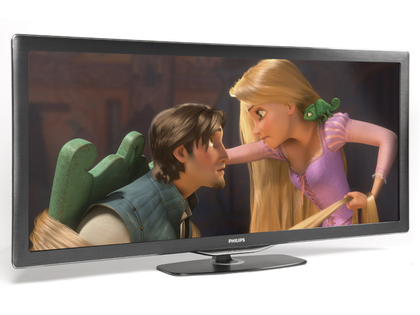

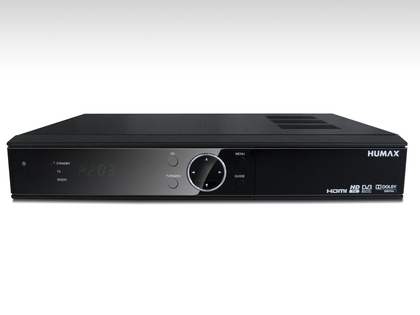

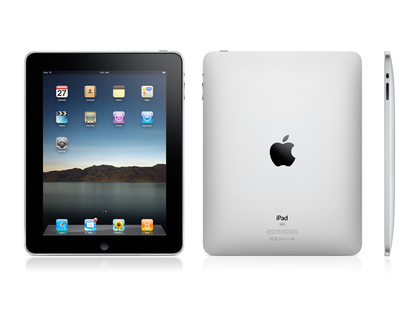

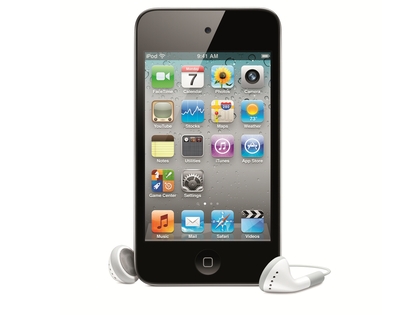

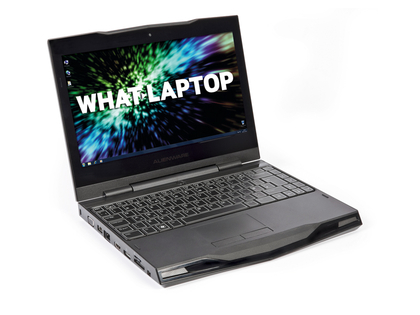



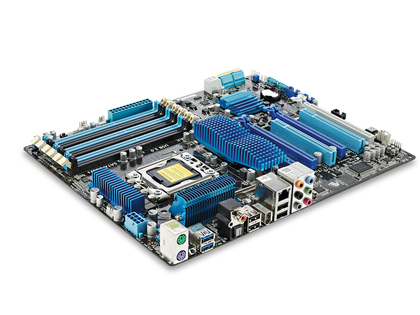
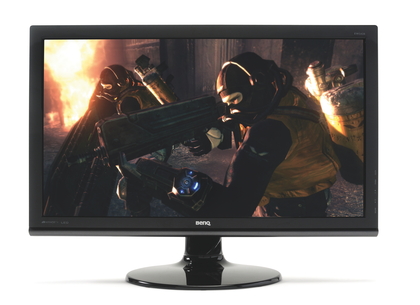
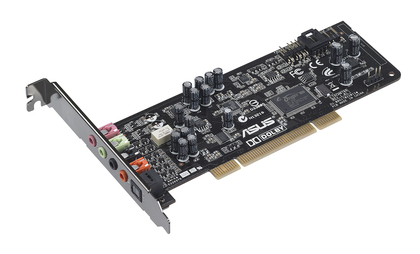
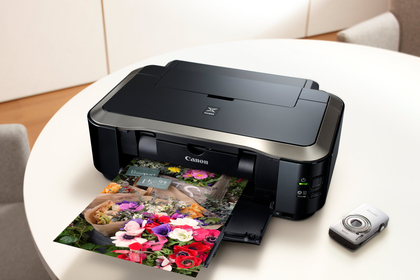








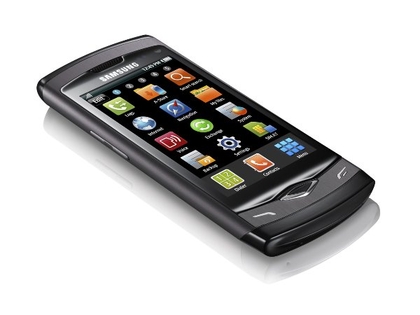
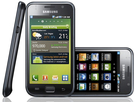



















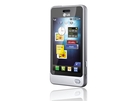








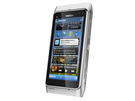







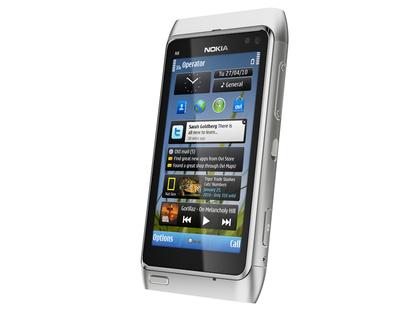


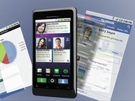

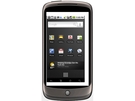







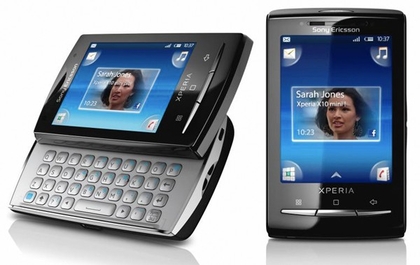





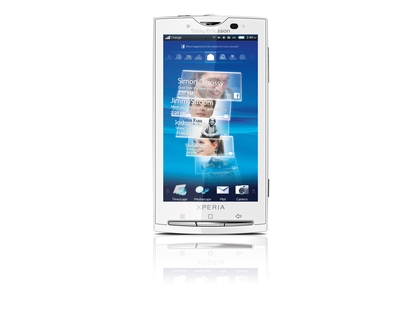




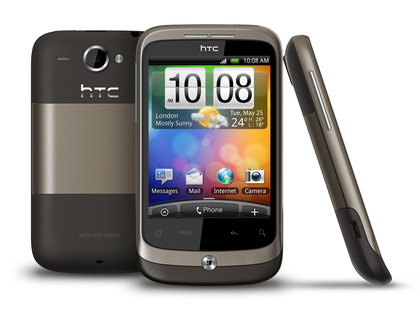

No comments:
Post a Comment